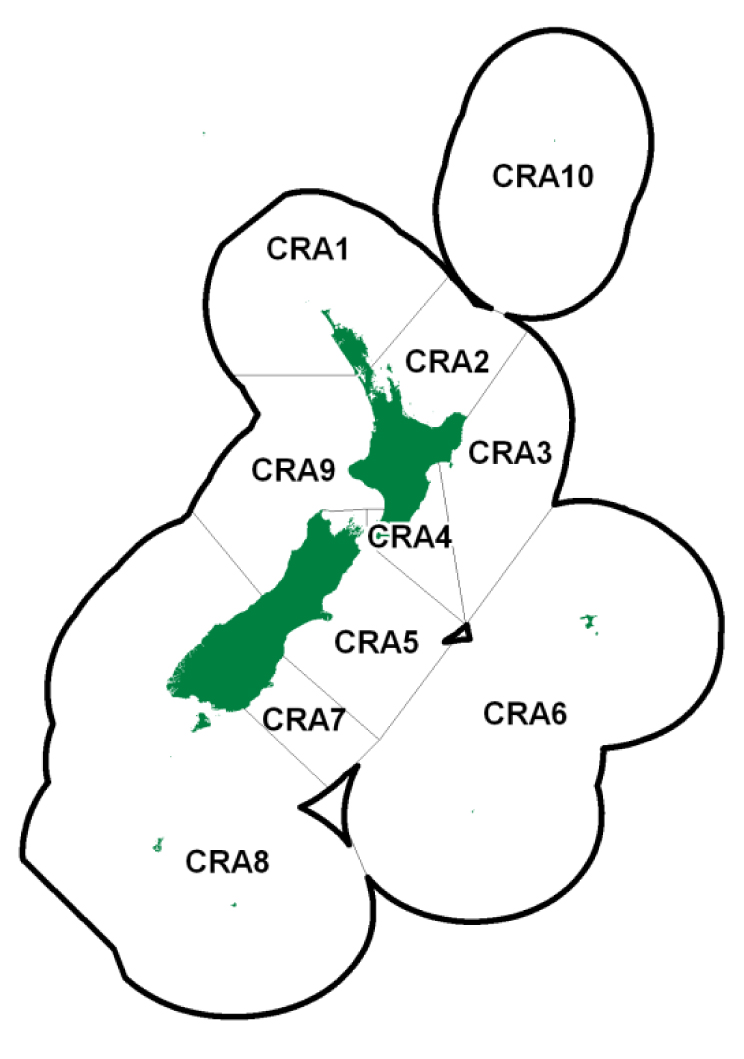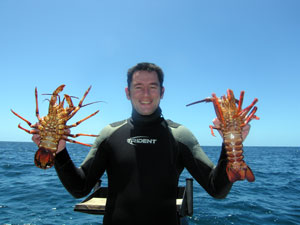- Fisheries Management in New Zealand
- Species
- Customary
- Aotea Great Barrier Temporary Closure 2023
- Astrolabe Reef s186A closure 2016
- Coromandel East temporary closure 2021
- Coromandel East temporary closure 2024
- Hauraki Gulf temporary closures 2024
- Kauaetangohia Mātaitai
- Maunganui Bay temporary closure
- Napier Reef temporary closure 2025
- Napier Reef temporary closure 2023
- Ōhiwa Harbour temporary closure 2024
- Ōmāui Mātaitai 2019-20
- Ruapuke Island Mātaitai 2024
- Taranaki temporary closure 2024
- Taranaki temporary closure 2022
- Tautuku Mātaitai 2019-21
- Te Māta temporary closure
- Tutukaka – Ngunguru temporary closure 2023
- Umupuia temporary closure
- Waiheke temporary closure 2021-24
- Waimārama temporary closure 2024
- Waimārama temporary closure 2020 -22
- Whale Island mātaitai 2024
- Whangaroa temporary closure 2021
- Fisheries policy & reform
- Fisheries plans
- Legislation and reviews
- Regulatory reviews
- Aggregation limits application 2024
- Aggregation excess limits EMA KAH 2020
- Crayfish Aggregation limit exemption 2016
- Deemed value review 2016
- Deemed value review 2021
- Deemed value review 2022
- Finfish bag limits review 2021
- Fiordland amateur regulations review 2022
- Papamoa Beach bylaw review 2018
- Seabird mitigation measures 2023
- Technical change proposals 2022
- Submissions by year
- North & South Islands submissions
- 2025 Submissions
- 2024 Submissions
- Aggregation limits application 2024
- Blue cod Marlborough Sounds review 2024
- Coromandel East temporary closure 2024
- Crayfish 1 management review 2024
- Crayfish 3 TAC review 2024
- Crayfish 7 and 8 review 2024
- Exception review for predated HMS 2024
- Extend coastal permits bill 2024
- Fast Track Approvals Bill 2024
- Hauraki Gulf temporary closures 2024
- Jack mackerel pilchard kingfish review 2024
- Kaikōura Pāua 3A TAC review 2024
- Kaikōura pāua reopening 2024
- Kina 1 review 2024
- Kina 3 TAC review 2024
- Kingfish 3 TAC review 2024
- Ōhiwa Harbour temporary closure 2024
- Pacific bluefin landing review 2024
- Ruapuke Island Mātaitai 2024
- Snapper flatfish elephantfish 7 review 2024
- Snapper Rig John dory 2 review 2024
- Snapper 8 TAC review 2024
- Southern bluefin landing review 2024
- Southern bluefin TAC review 2024
- Taranaki temporary closure 2024
- Waikato Regional Coastal Plan 2022-25
- Waimārama temporary closure 2024
- Whale Island mātaitai 2024
- 2023 submissions
- Aotea Great Barrier Temporary Closure 2023
- Coromandel scallop closure review 2023
- Crayfish 1 TAC review 2023
- Deemed values review SNA 2023
- Gurnard 3 TAC review 2023
- Industry Transformation Plan 2023
- Hauraki Gulf Fisheries Plan 2023
- Hauraki Gulf trawl corridors 2023-25
- Kina 1 TAC review 2023
- Kina dredging Tory Channel review 2023
- Marine Protection Bill 2023–25
- Napier Reef temporary closure 2023
- Pāua 2 Fisheries Plan 2023-24
- Pāua 2 TAC review 2023
- Red cod land-all catch review 2023
- Seabed mining inquiry 2023
- Seabird mitigation measures 2023
- Trevally 2 TAC review 2023
- Tutukaka – Ngunguru temporary closure 2023
- Waikato Regional Coastal Plan 2022-25
- 2022 submissions
- Blue cod 7 TAC review 2022
- Crayfish 1, 7 & 8 TAC review 2022
- Deemed value review 2022
- Fiordland amateur regulations review 2022
- Fisheries Amendment Bill 2022
- FMA 7 TAC review 2022
- Gurnard 3 TAC review 2022
- Habitats of significance 2022
- Hākaimangō-Matiatia (Northwest Waiheke) Marine Reserve
- Hāpuku Bass 7 & 8 TAC Review 2022/23
- Hauraki Gulf Marine Protected Areas 2022
- Kaikōura pāua reopening 2022
- Maunganui Bay temporary closure
- Northland area closure proposals 2022
- Pāua 5 Draft Fisheries Plan
- Rig 3 TAC review 2022
- Northland & Coromandel Scallop TAC Review 2022
- Tarakihi east coast TAC review 2022
- Taranaki temporary closure 2022
- Technical change proposals 2022
- Te Māta closure application
- Waikato Region Coastal Plan 2022
- Waimārama temporary closure 2020 -22
- Umupuia temporary closure 2008-2024
- 2021 submissions
- Blue cod 3 TAC review 2021
- Cameras on boats 2021
- Clive River dredging 2021
- Coromandel East temporary closure 2021
- Crayfish 1, 3, 4, 5 & Packhorse TAC review 2021
- Elephant fish 7 TAC review 2021
- Finfish bag limits review 2021
- Flatfish 2 TAC review 2021
- Gurnard 1 TAC review 2021
- Hāpuku-Bass 1 & 2 TAC review 2021
- Kaikōura pāua fishery reopening 2021
- Kingfish 8 Deemed value review 2021
- Snapper 8 TAC review 2021
- Southern bluefin tuna TAC review 2021
- Tarakihi east coast TAC review 2021
- Waiheke temporary closure 2021-24
- Whangaroa temporary closure 2021
- Yellow-eyed mullet 9 TAC review 2021
- 2020 submissions
- Aggregation limits kahawai, jack mackerel 2020
- Blue cod 5 TAC review 2020
- Crayfish 1, 3, 4, 7 & 8 TAC review 2020
- Crayfish ACE carry forward 2020
- Gurnard 7 TAC review 2020
- Kingfish 2, 3, 7 & 8 TAC review. July 2020
- Maunganui Bay temporary closure
- National Finfish Fisheries Plan 2019-20
- National Rock Lobster Management Group review 2020
- Northland scallop TAC review 2020
- Pāua 3 subdivision 2020
- Pōrae 1 TAC review 2020
- Sea Change Marine Spatial Plan 2014-21
- Snapper 7 TAC review 2020
- South Island trawl species review 2020
- Tautuku Mātaitai application 2019-21
- Waimārama temporary closure 2020 -22
- 2019 submissions
- 2018 Submissions
- 2017 Submissions
- 2016 Submissions
- Astrolabe Reef closure application
- Bluenose management review
- Coromandel Scallops
- Crayfish 3 Gisborne
- Crayfish management 2016
- Deemed values 2016
- Jack mackerel 3 management review
- John dory 7 management review
- Paua 7 South Island
- Quota aggregation limits exemption
- Scallops (SCA7) management 2
- Seabed mining Taranaki 2016
- Snapper 7 management review
- Surf Clam 7 review 2016
- 2015 Submissions
- 2014 Submissions
- 2013 Submissions
- 2012 Submissions
- 2011 Submissions
- 2010 Submissions
- 2009 Submissions
- 2008 Submissions
- 2007 Submissions
- Regional issues
- Aquaculture
- Bay of Plenty
- Hauraki Gulf
- Coromandel East temporary closure 2021
- Hākaimangō-Matiatia (Northwest Waiheke) Marine Reserve 2022
- Hauraki Gulf Fisheries Plan 2023
- Hauraki Gulf Marine Protected Areas 2022
- Hauraki Gulf trawl corridors 2023-25
- Marine Protection Bill 2023–25
- Ponui mussel farm proposal
- Sea Change Marine Spatial Plan 2014-21
- Te Māta temporary closure
- Umupuia temporary closure 2008-2024
- Coromandel scallop closure review 2023
- Waiheke temporary closure 2021-24
- Waikato Region Coastal Plan 2022
- Waikato Regional Coastal Plan 2022-25
- Marlborough and Tasman
- Northland
- Southland and Otago
- Marine protection
- RMA
- Research and reports
- Document Index
- Document Search
Crayfish management 2010-13
Introduction 
In 1992 the National Rock Lobster Management Group (NRLMG) was established as a statutory body to provide advice to the Minister on managing Rock Lobster (Crayfish) fisheries. It is advertised as a multi-stakeholder group comprising representatives of customary, recreational and commercial fishing interests, and the Ministry for Primary Industries (MPI). In reality, membership is limited to four stakeholder organisations, not all of whom are representative of the various interest groups.
A concern for non-commercial interests is that the Ministry for Primary Industries is now engaged in the management of Rock Lobster from the sideline.
The New Zealand Sport Fishing Council recommends the Minister for Primary Industries, Nathan Guy, takes a more active role in the management of Rock Lobster, to restore abundance, to decrease the risks associated with low biomass (stock) levels, and to provide for reasonable public use of the Cray fisheries.
Below is a chronological list of various management proposals and subsequent submissions.
Click on the right-hand image to download the document. Most recent activity is at the top of the list.
Details of reviews by year – |
2015 |
2014 |
2013 |
2012 |
2011 |
2010 |
2013
Minister’s reply to NZSFC about CRA3, Gisborne. 9 October 2013
Nathan Guy, the Minister for Primary Industries, has replied to the NZSFC June letter and is confident that his recent decisions on catch limits and concessions meet the statutory obligations under the Fisheries Act. He directs us to share our concerns with the statutory body charged with managing Crayfish, the National Rock Lobster Management Group. The same group dominated by commercial interests, and where recreational concerns are secondary.
No thanks Minister, just make sure our rock lobster fisheries are managed sustainably, to meet the needs of future generations, and to enable us to provide for our social, economic and cultural wellbeing. As per the purpose and principles of the Fisheries Act.
NZRFC Letter to Minister – Crayfish and Paua 5D decisions. June 2013
The NZ Recreational Fishing Council is very disappointed with the MInister’s decision prohibiting public access to undersized crayfish, fish that commercial fishers can harvest via a concession. The NZRFC also highlight the inconsistencies around management of Marlborough Sounds blue cod and Paua 5D, in Otago and Southland.
NZSFC Letter to Minister – Adverse decisions for CRA 3. June 2013
The NZ Sport Fishing Council has written to the Minister for Primary Industries, Nathan Guy, strongly objecting to the recent management decisions applying to Crayfish 3, Gisborne. In particular the increase in commercial catch and the continued support for the concession enabling commercial fishers to harvest undersized crayfish.
Minister’s decision for 1 October 2013
The Minister for Primary Industries, Nathan Guy, has decided to amend various commercial fishing regulations in CRA 3, 7 and 8. The Minister also considered and decided against allowing amateur fishers to take undersized crayfish at the sub-legal minimum size that commercial fishers can harvest crays. Commercial fishers are allowed under a concession to take 52 and 53mm rock lobster from CRA 3, 7 & 8.
Minister’s decision for 1 April 2013
Nathan Guy, the Minister for Primary Industries, has decided to increase the commercial catch limits in Gisborne (CRA3) and Wellington/Hawke Bay (CRA4). The commercial catch limits in the Otago (CRA7) fishery will decrease from 63.9 to 44 tonnes. In the Southern (CRA8) fishery all limits will remain as is, commercial interests in that fishery have taken a more conservative approach to managing the fishery, to gain higher yields. The NZSFC remains hopeful that this approach will eventually be applied in all CRA fisheries.
NZSFC Update 21 – Caught a crayfish lately? March 2013
If you are struggling to find a legal size crayfish for that special family dinner you are not alone. Crayfish is a popular target species for recreational fishers, yet in some areas they are scarce because undersized fish are being taken by commercial fishers and exported.
Opinion piece – Letter to NZ Fishing News editor. March 2013
Dr John McKoy is chairperson of the National Rock Lobster Management Group (NRLMG). In this letter to the editor of the New Zealand Fishing News magazine he strongly objects to and disagrees with assertions made by the NZ Sport Fishing Council in Update 20, ‘Wayward advice skewing decisions’. He notes the Council’s comments about the CRA 3 (Gisborne) fishery are ill-informed and poorly researched.
NZSFC Update 20 – Wayward advice skewing decisions. February 2013
Significant commercial catch limit increases have been proposed for two important fisheries and the New Zealand Sport Fishing Council has strongly objected to both proposals. There is insufficient, or downright dodgy, information to support catch increases in Coromandel scallops and in several rock lobster fisheries.
NZSFC Submission – Rock Lobster sustainability. 1 February 2013
The Minister for Primary Industries, Nathan Guy, needs to take a more active role in Rock Lobster management. The NZSFC also recommends he stops the use of Management Procedures based on commercial Catch Per Unit of Effort controls. A full management review is required.
NZSFC Summary of issues – January 2013
The New Zealand Sport Fishing Council summary of issues related to the most recent, objectionable proposals to increase the commercial catch levels in two management areas, CRA 3 (Gisborne) and CRA 4 (Hawke Bay to Wellington). The NZSFC supports the approach taken by a joint stakeholder meeting in the South, where high abundance was sought for two fisheries, CRA 7 (Otago) and CRA 8 (Southland).
2012
MPI proposals – Rock Lobster sustainability review. 14 December 2012
The Ministry for Primary Industries is consulting on proposals to review regulations applying in selected Rock Lobster fisheries – CRA 3 (Gisborne), CRA 4 (Hawke Bay to Wellington), CRA 7 (Otago) and CRA 8 (Southland). Notably the use of Management Procedures is underpinning proposed increases in commercial catch levels. Submissions due on 1 February 2013.
MPI proposals – Advisory letter. 14 December 2012
An letter from the Ministry for Primary Industries advising of the consultation process to review the use of Management Procedures to guide Total Allowable Catch (TAC) levels in selected Rock Lobster fisheries – CRA 3 (Gisborne), CRA 4 (Hawke Bay to Wellington), CRA 7 (Otago) and CRA 8 (Southland). Simulations of the Management Procedures indicate there will be benefits for all sectors – industry, customary and recreational.
NZSFC Submission – Regulation review. 16 December 2012
All Concessions applying in the Rock Lobster fisheries ought to be revoked by the Minister for Primary Industries, David Carter. The New Zealand Sport Fishing Council supports the status quo for Concession Area Regulations A to H. Also, that all Concession-landed male fish be recorded separately so that the amount of Concession fish being taken can be monitored.
NZSFC Summary of issues – December 2012
The New Zealand Sport Fishing Council summary of issues related to the review of area regulations, associated with the taking, landing, transport, processing and sale of Concession Crayfish. Concessions enable commercial fishers to take Rock Lobster smaller than the minimum legal size (MLS), that applies to recreational fishers. The NZSFC advocate that Concessions must be abandoned immediately and a full management review initiated.
MPI proposals – Rock Lobster regulation review. 8 November 2012
A review of Fiordland Rock Lobster amateur regulations is underway. The Ministry for Primary Industries is consulting on several proposals for Fiordland, and others relating to the application of Concessions in Gisborne, Otago and Southland. Submissions are due on 13 December 2012.
MPI proposals – Advisory letter. 8 November 2012
A letter from the Ministry for Primary Industries advising of the review of Rock Lobster regulatory controls applying in Fiordland, Gisborne, Otago and Southland. The National Rock Lobster Management Group also requests views on other management measures, including allowing recreational fishers access to the commercial minimum legal size, Concession fish, in Gisborne, Otago and Southland.
Minister’s decision. Concession Area regulation review. 31 May 2012
David Carter, the Minister for Primary Industries, has decided to retain all of the existing rock lobster Concession Area minimum legal size limit regulations applying to commercial fishers. Commercial fishers are allowed under a concession to take 52 and 53mm rock lobster from CRA 3, 7 & 8. In August 2011 MPI issued a discussion paper advising a review of these concessions. The NZSFC submitted that the concessions needed to be revoked, on 9 September 2011. The Minister’s decision to retain the status quo was advised on 31 May 2012.
MPI FAP. Concession Area regulation review Final Advice Paper to Minister. May 2012
Advice Paper from the Ministry for Primary Industries to the Minister, David Carter, advising of the details and submissions received in response to the review of the commercial Concession Area regulations. Recommendations included in this FAP. FAP released at the time of the Minister’s announced decision (above).
NZSFC Media release – Public robbed of crayfish. 28 March 2012
Public robbed of crayfish through unfair practices. Recent Ministerial decisions allocating more of Gisborne’s crayfish to commercial interests have outraged the local community and the New Zealand Sport Fishing Council. The decisions apply from 1 April 2012.
Minister’s decision – Rock Lobster sustainability review. 26 March 2012
David Carter’s decision to increase the commercial catch level by 29 tonnes in Gisborne was surprising given the evidence presented and the non-commercial submissions advocating for a more precautionary approach, to rebuild depleted stocks. Commercial fishers in CRA 3 fishery, around Gisborne, can also take fish smaller than the minimum legal size under a Concession. This decision is considered by locals as a “slap in the face”.
NZSFC Submission – Sustainability review. 3 February 2012
In this submission the New Zealand Sport Fishing Council advocate that the Rock Lobster fisheries are highly prized for their ecological, social, economic and cultural value. The NZSFC is committed to ensuring the Cray fisheries are managed conservatively, in the national interest and are sufficiently abundant to provide for our current and future generations needs.
NIWA Summer series – Rock lobster with your summer salad. 10 January 2012
An interesting article describing the lifecycle and habits of crayfish. This piece was written by Dr John Booth of the National Institute of Water and Atmospheric Research (NIWA). This article was one of eight produced by NIWA as part of their Summer Series 2012 programme. NIWA is a research contractor to the Ministry for Primary Industries in both shellfish and finfish fisheries.
2011
MFish proposals – Rock Lobster sustainability review. 19 December 2011
A review of sustainability measures applying in CRA 3 (Gisborne), CRA 4 (Hawke Bay-Wellington), CRA 5 (Canterbury-Marlborough) and CRA 7 (Otago) is underway. The Ministry of Fisheries advise this review includes consultation on commercial catch levels and Management Procedures that are used to guide proposed catch levels. A decision will apply from 1 April 2012. Submissions are due by 3 February 2012.
MFish proposals – Advisory letter. 19 December 2011
A letter from the Ministry of Fisheries advising a review of sustainability measures is underway. Specifically they are consulting on proposals to apply in CRA 3 (Gisborne), CRA 4 (Hawke Bay-Wellington), CRA 5 (Canterbury-Marlborough) and CRA 7 (Otago). Any Ministerial decision arising from this review will apply from 1 April 2012. Submissions are due by 3 February 2012.
MFish stock info – Plenary document. November 2011
This 60-page document from the Ministry of Fisheries includes historic Rock Lobster catch information by area and year. It has detailed information on management for each fish stock. If you are looking for specific details in relation to CRA 1, 2, 3, 4, 5, 6, 7, 7 & 9 then this is probably where you will find it.
NZSFC Submission – Concession Area regulation review. 11 September 2011
All Concessions enabling commercial fishers to take Crayfish below the minimum legal size must be removed immediately. The New Zealand Sport Fishing Council does not believe all the Rock Lobster stocks are being managed at sufficient abundance levels to enable people to provide for their social, economic and cultural wellbeing, as required by the Fisheries Act 1996. We object to the ongoing mismanagement of our taonga [treasure].
MFish IPP. Proposals to review Concession Area regulations. 5 August 2011
The Ministry of Fisheries’ Initial Position Paper (IPP) outlining the review of the commercial Concession Area regulations that apply in CRA 3, 7 & 8. CRA 3 is Gisborne, CRA 7 Otago, CRA 8 Southern. Submissions are due by 9 September 2011. [A decision to retain the status quo was announced on 31 May 2012.]
MFish letter. Letter advising of Concession review. 5 August 2011
Letter from the Ministry of Fisheries advising of a review of the commercial concession area regulations. A proposal document accompanied the letter.
Minister’s decision – Sustainability review. 30 March 2011
Phil Heatley’s decisions for the future management of CRA 4, 5, 7 & 8. Increased commercial catch limits in CRA 4, Wellington-Hawkes Bay. Retain current commercial catch limits in CRA 5, Canterbury/Marlborough. Decrease the commercial catch limits in CRA 7, Otago, and CRA 8, Southern. Decision applies from 1 April 2011.
Final Advice Paper. Sustainability review. March 2011
Final Advice Paper to the Minister, Phil Heatley, from the National Rock Lobster Management Group (NRLMG). This FAP summarises the submissions received in response to the Initial Position Paper, recommendations and stock information relevant to the future management of CRA 4, 5, 7 & 8.
Submissions. Responses to sustainability review for 1 April 2011. February 2011
MFish/NRLMG record of public and industry submissions made in response to the sustainability review proposals issued on 13 December 2010. The proposals relate to CRA 4 (Wellington-Hawkes Bay), CRA 5 (Canterbury/Marlborough), CRA 7, Otago and CRA 8 (Southern). Decision (above) applies from 1 April 2011.
NZSFC Submission – Sustainability review. 4 February 2011
A joint submission by the New Zealand Sport Fishing Council and option4 expressing serious concerns about the mismanagement of our Rock Lobster fisheries, and highlighting that we have made previous submissions and recommendations regarding more precautionary management.
2010
Initial Position Paper. Sustainability review for 1 April 2011
Initial Position Paper outlining potential future management options for CRA 4 (Wellington-Hawkes Bay), CRA 5 (Canterbury/Marlborough), CRA 7, Otago and CRA 8 (Southern). Submissions are due by 2 February 2011 and any decision will apply from 1 April 2011. Decision (above) was advised on 30 March 2011.
Joint Submission – Sustainability review. 8 February 2010
A joint submission by the New Zealand Sport Fishing Council Zone 5 clubs and option4. These parties seriously object to the commercial focus of the latest management proposals. Rock Lobster are a vitally important food fishery for social and cultural reasons. Our non-commercial interests are not being ‘allowed for’ as required by the Fisheries Act 1996, because the Rock Lobster stocks are being suppressed and maintained at such low abundance levels.
NZSFC Submission – Sustainability review. 5 February 2010
A submission by the New Zealand Sport Fishing Council on the review of sustainability measures for CRA 3 (Gisborne) and CRA 4 (Hawke Bay-Wellington). Concerns about ongoing mismanagement in CRA 3 are reiterated. There is limited support for the proposed Decision Rule to apply in CRA 3. There ought to be no increase in the CRA 4 Total Allowable Catch. It is implausible that the CRA 4 fishery biomass has increased by 50% in one year.
Historic processes and input. option4 and NZSFC. 2010 – 2012
Between 2010 and 2012 the NZSFC worked with option4 to develop and record management processes for various crayfish stocks. This was a time of great learning and optimism that providing comprehensive feedback would have some positive influence on fisheries management, particularly for our crayfish, our taonga. Despite the lack of any meaningful response, the NZSFC continues to participate in the crayfish management processes in the hope that abundance will be restored and future generations will get to witness a rebuilt and productive marine environment.




